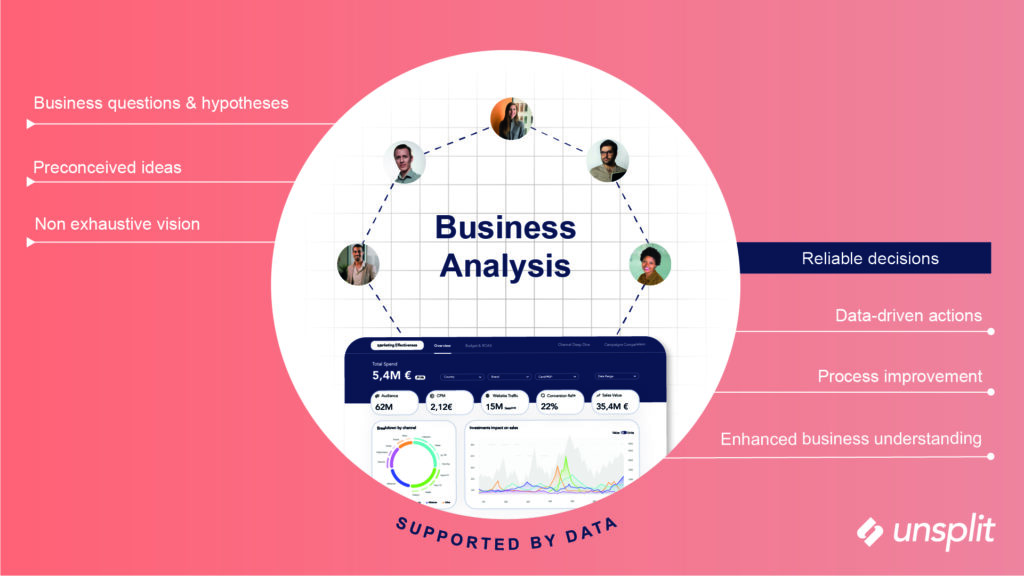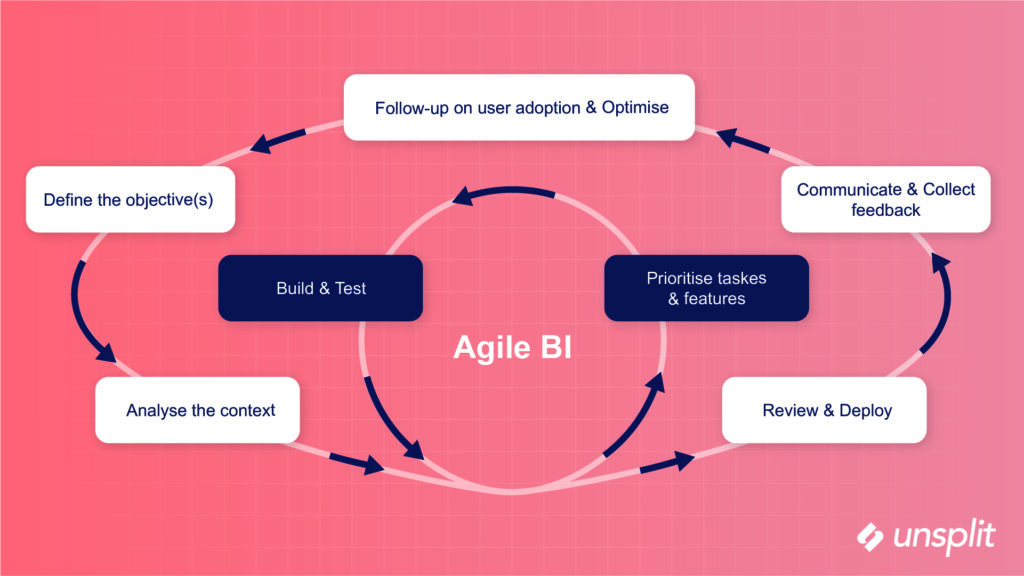Dashboards are not the end game.
How must data be incorporated within business processes ?
Dashboards have always been good at one thing : quickly displaying charts and numbers. They have replaced worn out spreadsheets, they have helped to standardize and structure access to data… yet dashboards still do not take actions and lead the business on their own once they are live.
While the input is invariably data, the output of an analytical product isn’t to deploy a dashboard nor to calculate key indicators but the business actions taken from a contextual situation using data driven-insights as objective reasoning. Many data analysts focus on delivering thoughtful dashboards but miss on the outcomes and the usage brought by their work. Data analysts are not just dashboard creators, they must seize the business context and understand how their work will fit in and enhance business decisions. A dashboard is nothing more than an analytical product used to make decisions at a certain step within a business process. Thus creating curated and easy to use dashboards is still key to consolidating and sharing data judiciously, nevertheless it shall be considered as part of a whole and serve as bringing data-driven inputs to answer precise business questions.
Data analytics, and broaderly data, has no purpose by itself. Data initiatives must be at the service of the business ambitions. If you are delivering analytical products you should already know about who your end users are, what they are trying to understand and the actions that could be taken. If you are not on point or want to go further in your business understanding; get closer to your end users, learn more about the business you are serving, imerge yourself within the business teams and follow-up on user adoption. One of the keys for the success of a business strategy supported by data is to align perspectives and follow a common objective.
June 4th 2024



